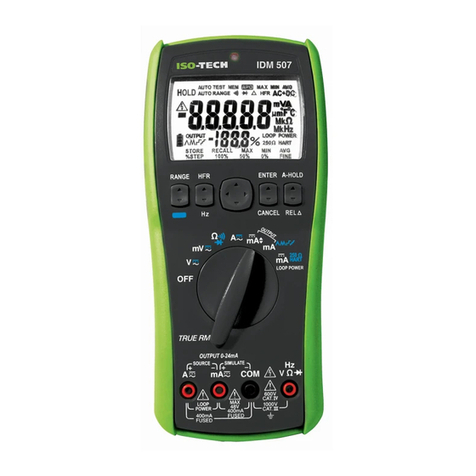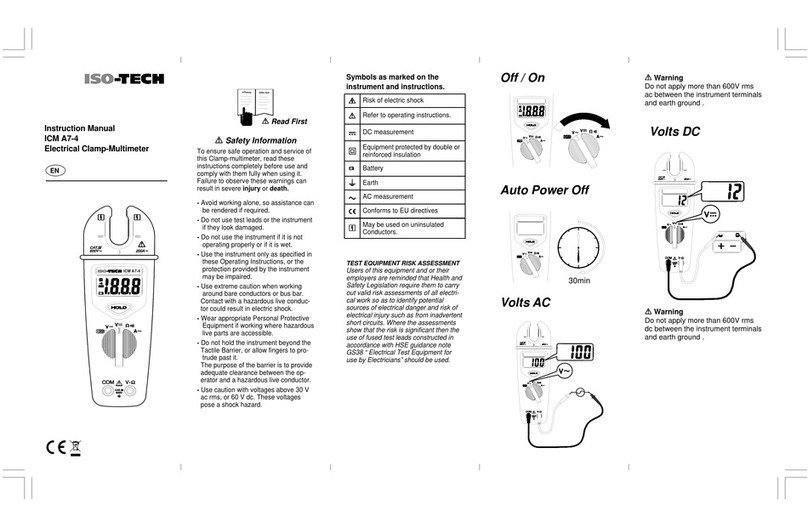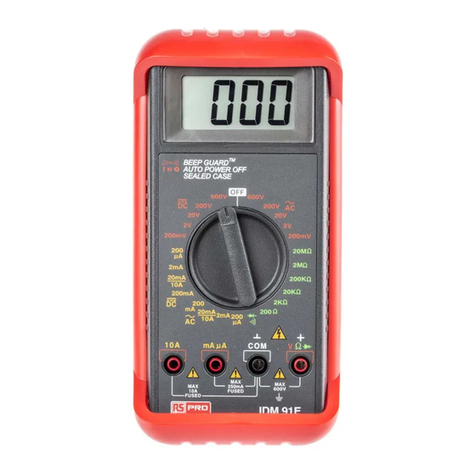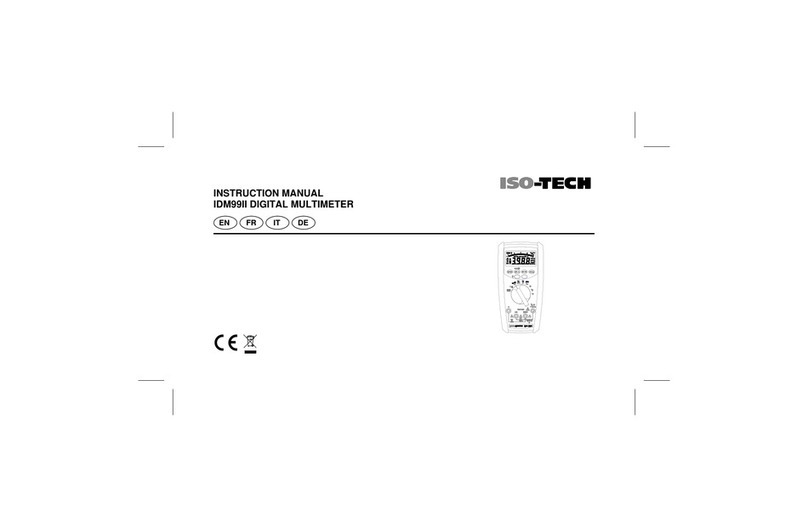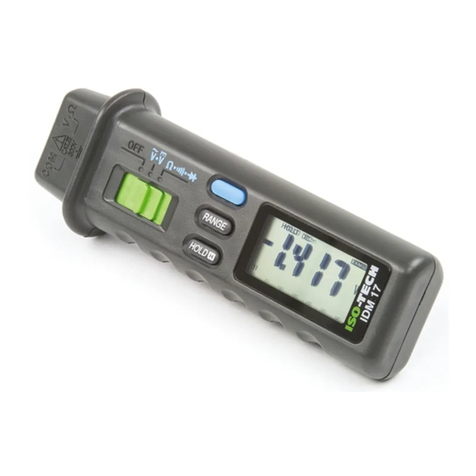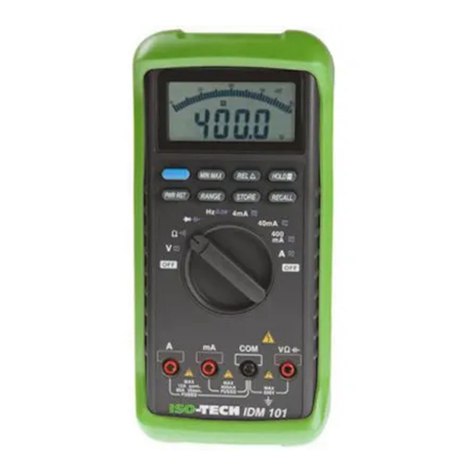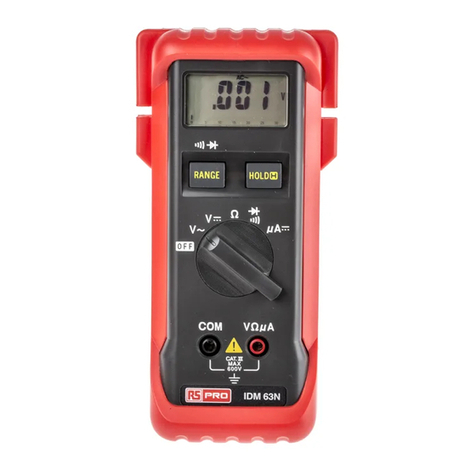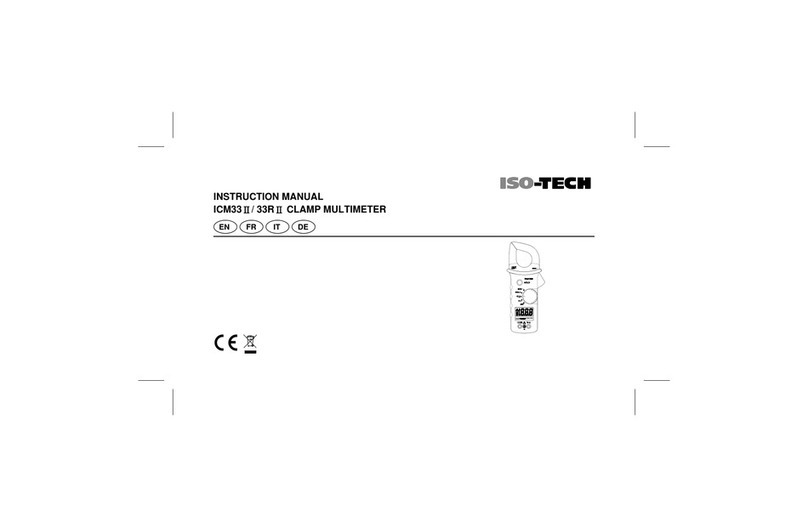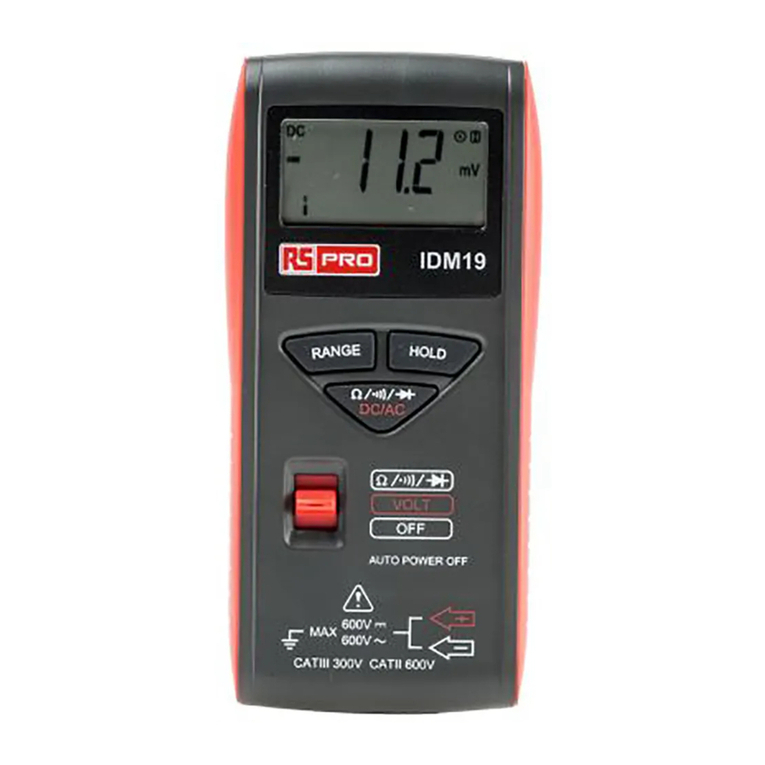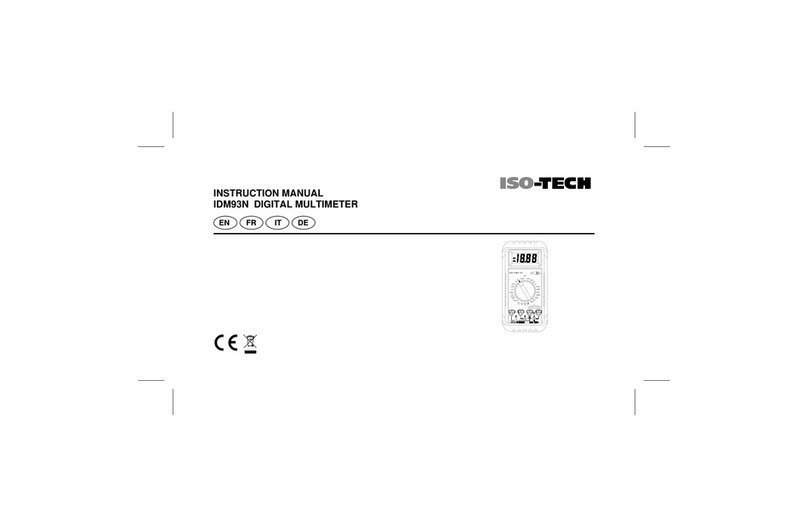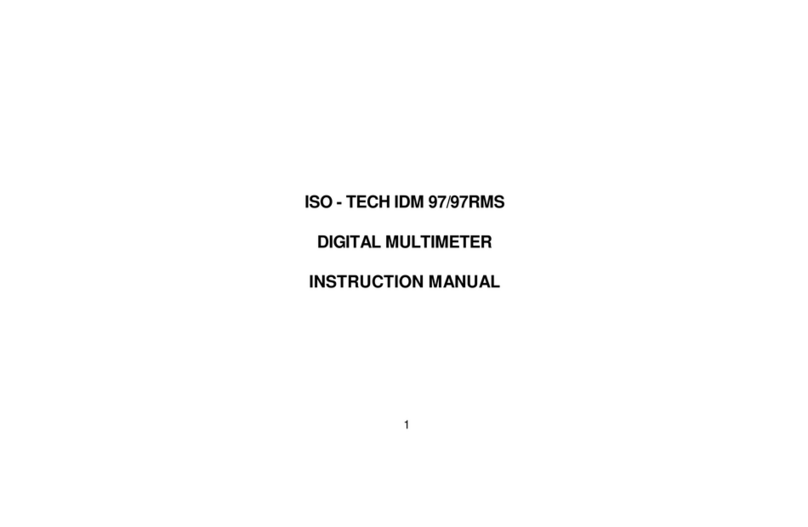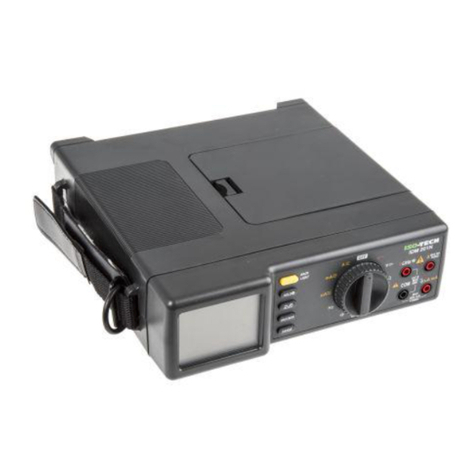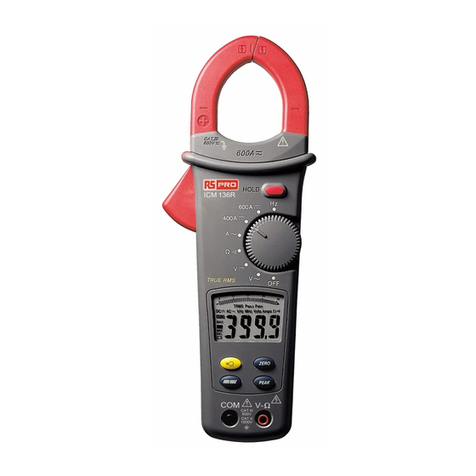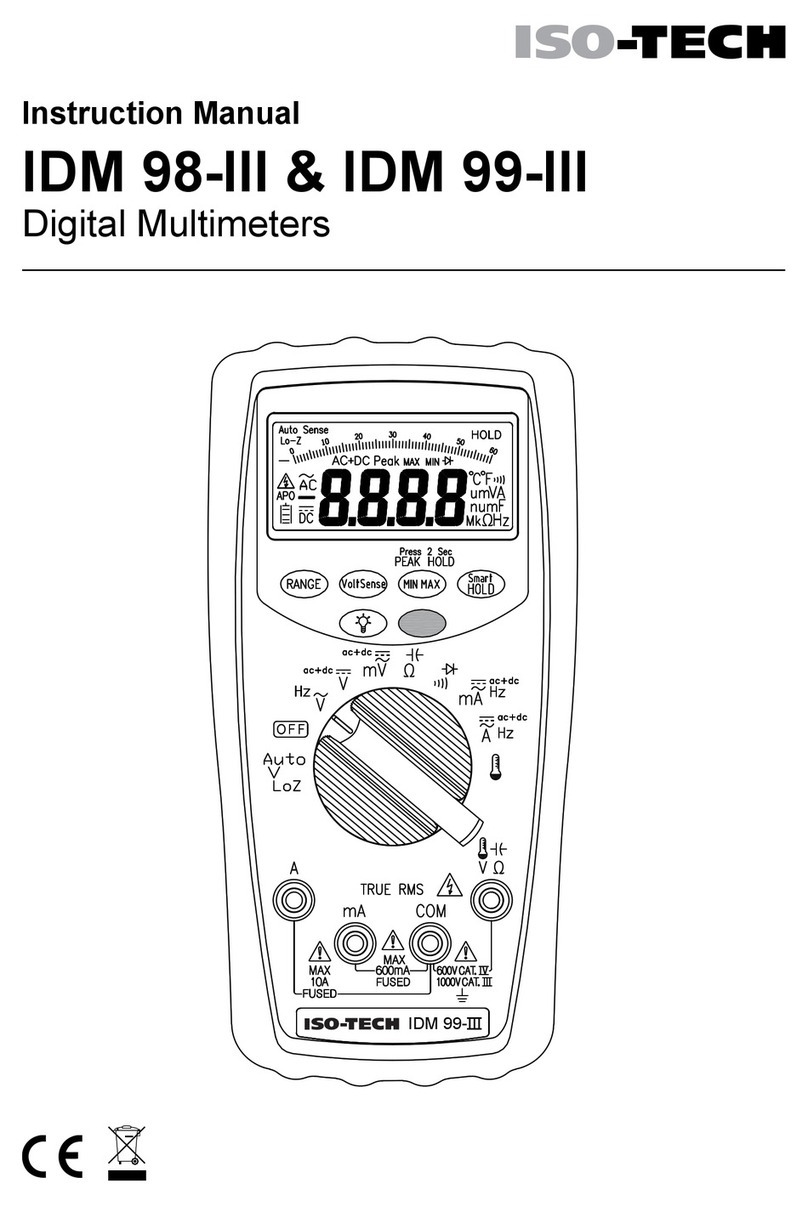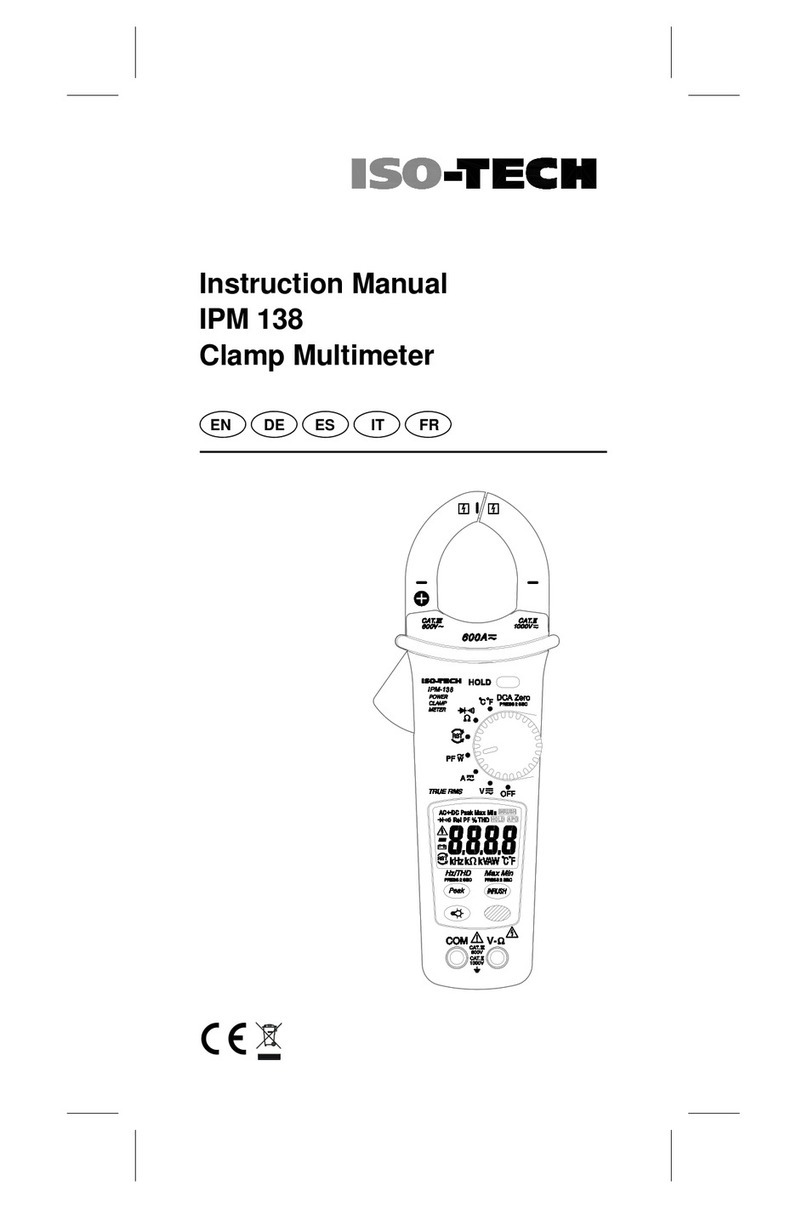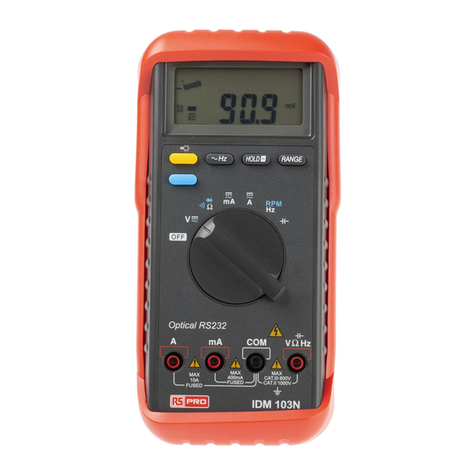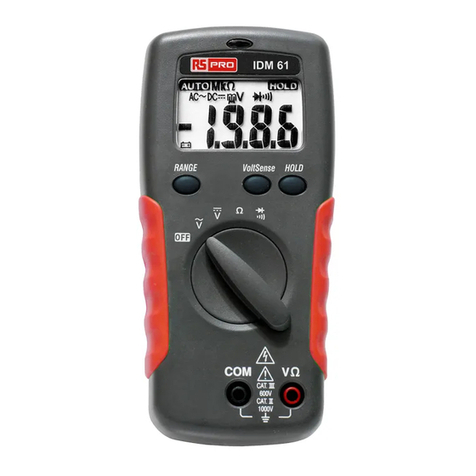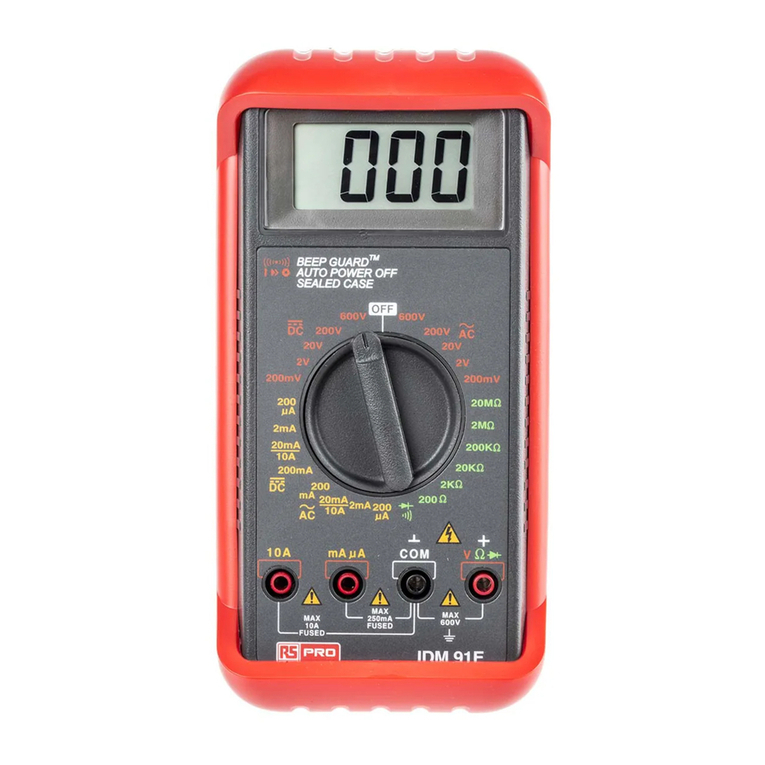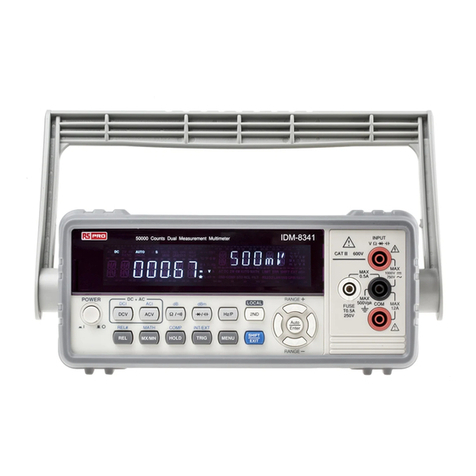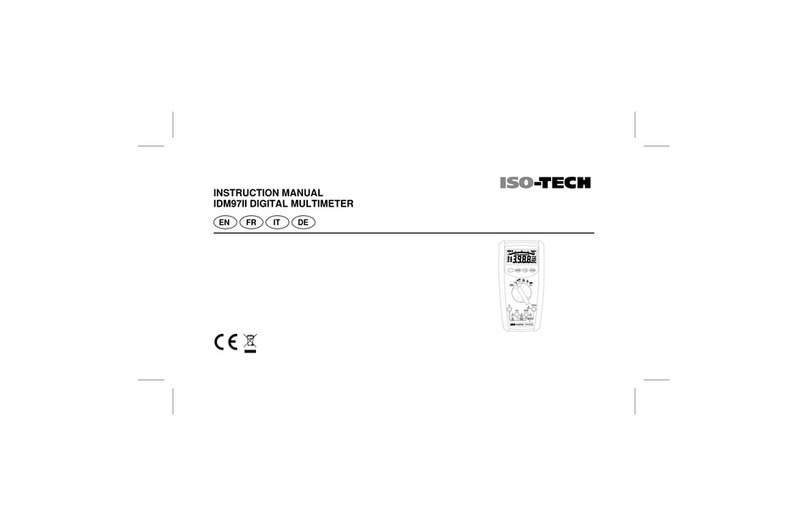6
3. Technical specification
3.1 General characteristics
Display : 33/4 digit 4000 count LCD display with a 42-segment analog bargraph display. Higher resolution of up to 9999 in
frequency range.
Display update rate : Two per second for digital display, 20 per second for bargraph display. For capacitance and frequency
measurements: 1 per second.
Over range : Most significant digit flashes.
Backlighting : LED
Safety : These meters have been produced to comply with category II requirements under IEC publication 1010-1,
"Safety requirements for electrical equipment for measuring, monitoring and laboratory use". This standard of safety
can only be guaranteed if the maximum and minimum figures specified below are observed.
Ambient conditions
Maximum altitude : 2000m
Installation category : 600V Category III , 300V Category II
Pollution degree : 2
Operating temperature : 0 to +50°C
Storage temperature : –30 to +70°C
Temperature coefficient : 0.15 x specified accuracy/°C, <18°C or >28°C
Relative humidity : 0 to 70% (0 to +50°C)
Maximum voltage to earth : 600V d.c./a.c. peak voltage at any connection
Supply required : 90 to 264V, 50/60Hz a.c. voltage, six 1.5 V AA or LR6 or AM3 batteries
(not supplied) able to supply a power of at least 10 VA
Battery life (alkaline) : typically 1200 hours without backlighting
typically 80 hours with backlighting on continuously
Dimensions (B x H x D) mm : 218 x 73 x 195(without carrying strap)
Weight (without power cable) : 1.3kg
Accessories supplied : Test leads, carrying strap, power cable and instruction manual
